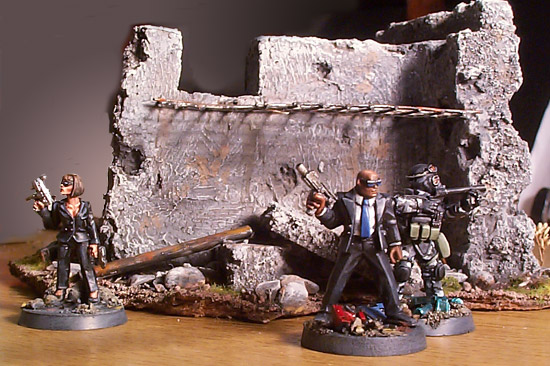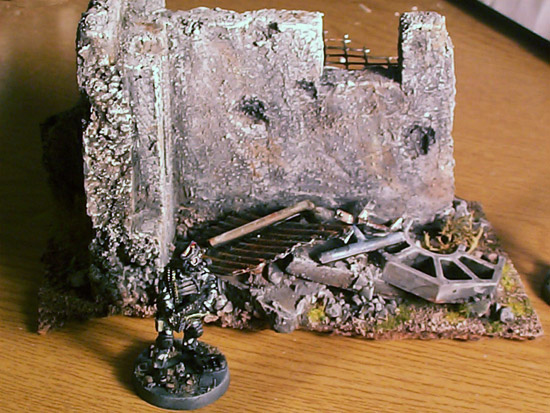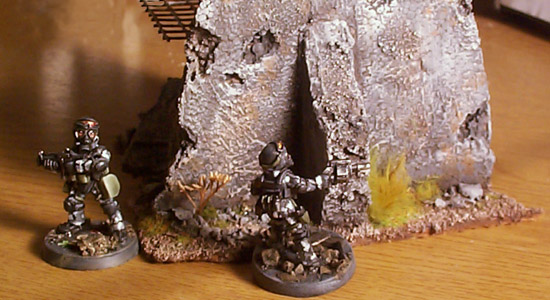|
|
©1999-2003. All rights reserved. |
Concrete Ruin
Chunks of polystyrene make great monolithic slabs of wreckage.
Materials
Basic Construction
Chop it upTake a bit of polystyrene. Packaging is usually better than insulation batts, because the beads tend to be smaller which makes it tougher. You could use a hot-wire cutter, but when cutting small bits a sharp scalpel or a good quality serrated kitchen knife will be fine.
Stick it together
Rough it up a bit
Texture
If you want your building to look awful, then leave all the nasty polystyrene beads showing. Assuming you don't, then there a couple of ways you can tackle this. My favourite is tile adhesive, which is stickier and tougher than most fillers. It also comes ready mixed, so it is quick too. Smear a thin layer all over, using your fingers and a spatula. Then sprinkle 'broken' edges of the concrete with sand and small stones to get a rough effect.If you don't have tile adhesive then you could use filler. It's best to mix this with a bit of PVA, which will slightly increase it's strength, however, it will tend to crack off the polystyrene if roughly handled.
Debris
Debris is really a whole topic in itself, but you could start with some of the following:
Painting
| ||||

©2004. All rights reserved.
| |||||



